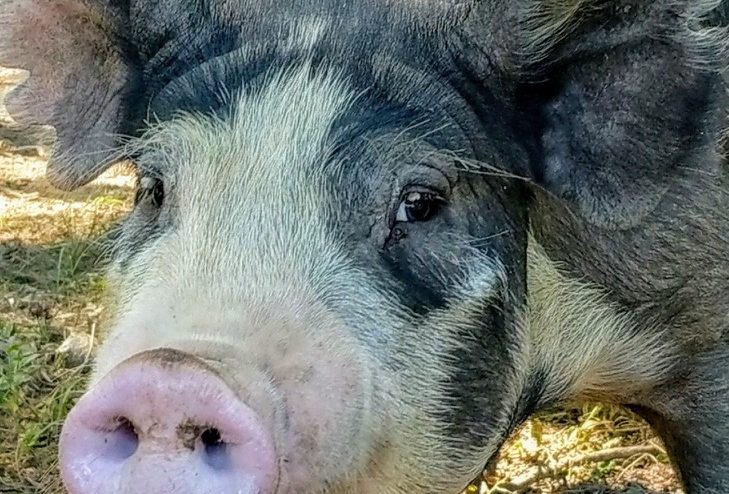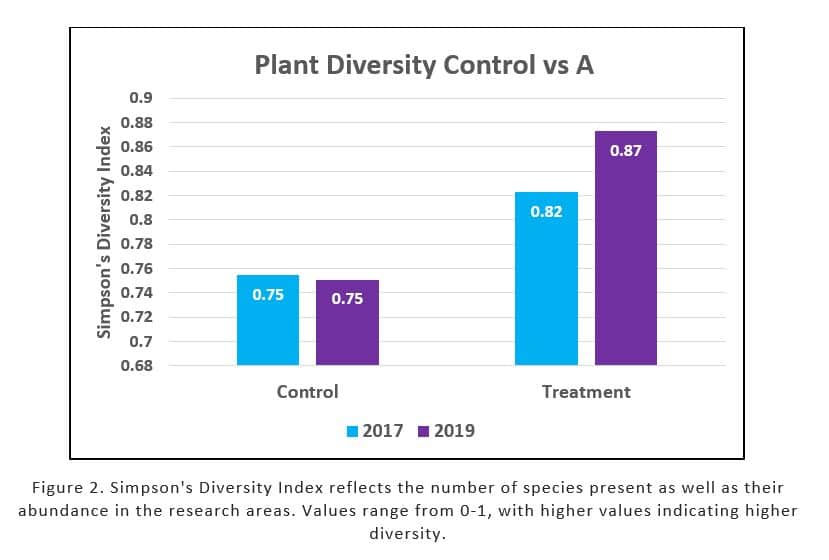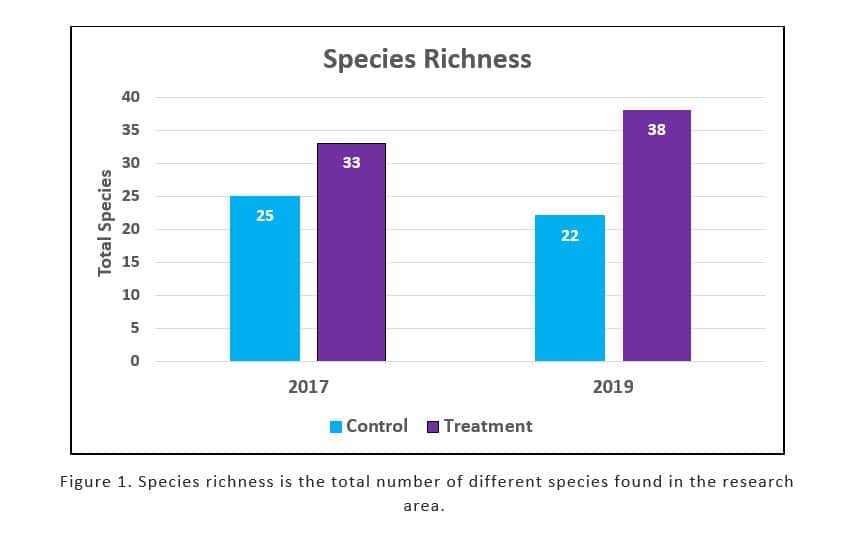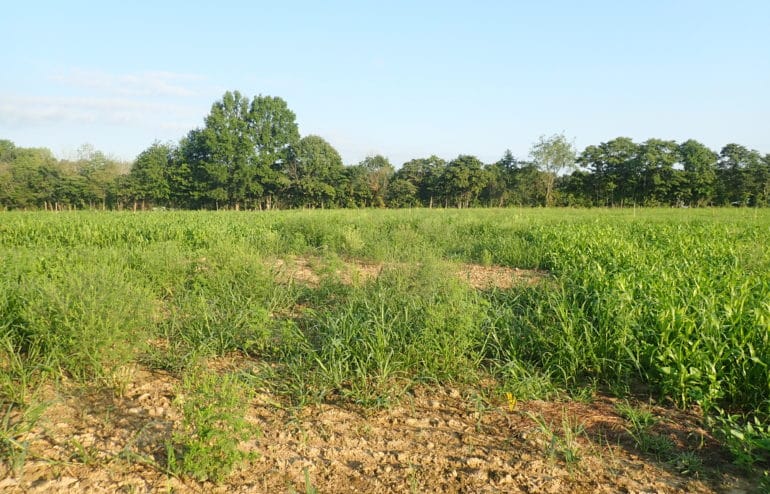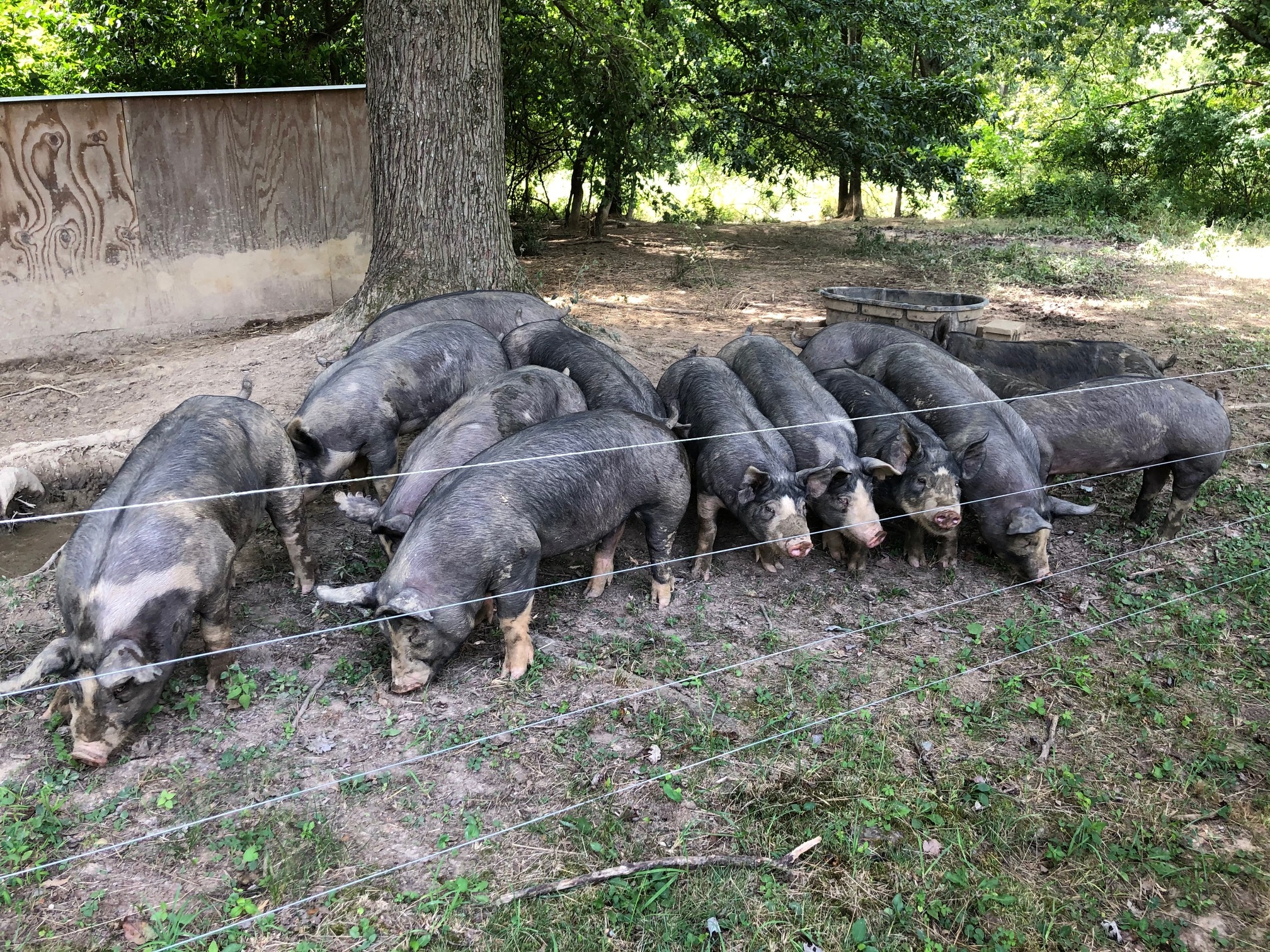
Can Livestock Control Invasive Species (Initial Results)
We have been researching honeysuckle and other invasive plant removal techniques to rid our property of these species. In 2017, we began studying a biological control method of removal using our woodland raised hogs. Hogs have a natural tendency to uproot vegetation for food, so we thought they would be perfect for the job. We set up 3 research areas: one control (1/2 acre) and two treatments (1/2 acre and 1 acre “A”). The hogs rotate through the treatment areas every other year. The one acre treatment had hogs in 2017 and again in 2019. One month after the hogs were removed from the treatment area, we collected vegetation data by randomly placing 1 m2 plots in the areas and counting species.
We calculated species richness (number of different species) and species diversity. Each year, treatment areas had a higher species richness compared to the control area (see Figure 1). To calculate species diversity we used the Simpson’s Diversity Index. The treatment areas, when compared to the control areas, have a higher diversity each year (See Figure 2). We are further looking at these data to analyze how the hogs have impacted invasive plants. Our data will be shared with our livestock crew to inform future hog management decisions.
–Chad G.

